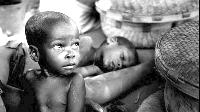
The Multidimensional Poverty Index was launched by the UNDP and the Oxford Poverty & Human Development Initiative (OPHI) in 2010. Basic philosophy and significance of MPI is that it is based on the idea that poverty is not unidimensional (not just depends on income and one individual may lack several basic needs like education, health etc.), rather it is multidimensional.
The MPI measures overlapping deprivations at the household level across the same three dimensions as the Human Development Index (health, education and living standards). The index shows the proportion of poor people and the average number of deprivations each poor person experiences at the same time.
What is the methodology of MPI?
The Multidimensional Poverty Index (MPI) identifies multiple deprivations and that is why the index is known as multidimensional. Methodological significance of MPI is that it recognizes poverty from different dimensions compared to the conventional methodology that measures poverty only from the income or monetary terms.
For the estimation of deprivation or poverty from different dimensions, the MPI uses three dimensions and ten indicators. The three dimensions are health, education and standard of living. Deprivations are measured for the household and individual levels. The household data are aggregated to derive the national measure of multidimensional poverty. The three dimensions and ten indicators based on them are:
The dimensions and the respective indicators used are:
- Education: Years of schooling and child enrollment (1/6 weightage each, total 2/6);
- Health: Child mortality and nutrition (1/6 weightage each, total 2/6);
- Standard of living: Electricity, flooring, drinking water, sanitation, cooking fuel and assets (1/18 weightage each, total 2/6)
What makes a household/individual ‘multidimensionally’ poor?
Deprivation of one dimension (like education) alone may not represent poverty. Here, the MPI requires a household to be deprived in multiple indicators at the same time. A person is multidimensionally poor if she/he is deprived in one third or more (means 33% or more) of the weighted indicators (out of the ten indicators).
Those who are deprived in one half or more of the weighted indicators are considered living in extreme multidimensional poverty.
What does the MPI Measure?
The MPI identifies overlapping deprivations at the household level across the same three dimensions as the Human Development Index (health, education and living standards) and shows the proportion of poor people and the average number of deprivations each poor person experiences at the same time.
What MPI measures – acute poverty or extreme poverty?
The MPI is a measure of “acute” poverty because it reflects overlapping deprivation in basic needs. If a person is deprived in 20-33.3% of the weighted indicators they are considered ‘Vulnerable to Poverty’, and if they are deprived in 50% or more, they are identified as being in ‘Severe Poverty’.
On the other hand, World Bank’s measure of “extreme” poverty captures with an income criteria of less than $1.90 (in 2011 $PPP) a day.
What is the policy implication of MPI?
The MPI methodology shows areas in which the poor are deprived and helps to identify inter-connections among those deprivations. This enables policymakers to target resources and design policies more effectively.
India in the Multidimensional Poverty Index 2016
The Multi-Dimensional Poverty Index for 2016 was published by OPHI. It includes 102 countries, covering 75 per cent of the world’s population, or around 5.2 billion people. According to the estimate, nearly 30 per cent of people (1.6 billion) are identified as multidimensionally poor.
According to the 2016 Report, India has the highest multidimensional poverty after Afghanistan in South Asia. Nearly 54% of the Indian population is multidimensionally poor compared to 66% in Afghanistan. The poorest region in South Asia is Bihar, followed by ‘South’ Afghanistan. The poorest 15 subnational regions in South Asia are all in India or Afghanistan, plus one region (Baluchistan) of Pakistan.
There are more ‘Multidimensional poor people (421 mn) in the eight poorest Indian states (Bihar, Chhattisgarh, Jharkhand, Madhya Pradesh, Orissa, Rajasthan, Uttar Pradesh, and West Bengal) than in 26 poorest African countries combined (410 mn).
*********









